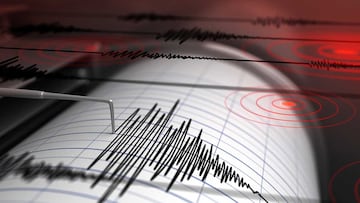NATURE
What is ‘bradyseism’? Concerns grow as big earthquake meets supervolcano in Italy
Naples recorded its largest earthquake in the last 40 years due to the geological phenomenon of “bradyseism”.

Naples experienced its most significant earthquake in the past four decades on Monday, with approximately 150 aftershocks occurring within just five hours. The strongest quake was reported near Pozzuoli, a port city with a population of over 80,000, situated close to the volcanic area of the Phlegraean Fields.
Naples on alert after major earthquake in volcanic caldera
The Phlegraean Fields comprise the largest active volcanic caldera in Europe, consisting of several craters rather than a single volcanic structure. These craters are scattered throughout the region, with some submerged underwater. The caldera formed 39,000 years ago, but its last major eruption occurred nearly 500 years ago, in 1538.
“We are used to earthquakes, but this one was very frightening because it was the strongest in 40 years,” said Mimmo Pignatelli, a resident of Solfatara, a town near one of the volcanic craters, as reported by The Guardian. “We could feel the ground moving as we walked.”
The affected area has a high seismic risk – like much of the peninsula – with a densely populated region that has even seen construction on the slopes of the volcano. Naples itself has a population of one million, and the Phlegraean Fields, with Pozzuoli as the epicenter, are home to another half a million people.
What is Bradyseism?
The earthquakes, as reported by news agency EFE, are caused by the geological phenomenon known as ‘bradyseism,’ which gradually deforms the ground by expanding or contracting it depending on the accumulation of magma or gas in the subsoil, triggering seismic activity. This phenomenon led to the Roman city of Baiae, near Pozzuoli, sinking into the sea centuries ago. Currently, the bradyseism is in an ascending phase, with the ground level rising by two centimetres per month.
For the moment, the National Institute of Geophysics and Volcanology (INGV) has called for calm, stating that an eruption in the Phlegraean Fields is not anticipated since there is no recorded increase in magma activity. They recall that the crisis between 1982 and 1984 was even worse, with the ground rising by nine centimeters per month. In the event of a potential eruption, the Civil Protection’s plan prioritises the preventive evacuation of about 500,000 people living in the “Red Zone” of the Phlegraean Fields, whose lives would be at serious risk from the explosion.





